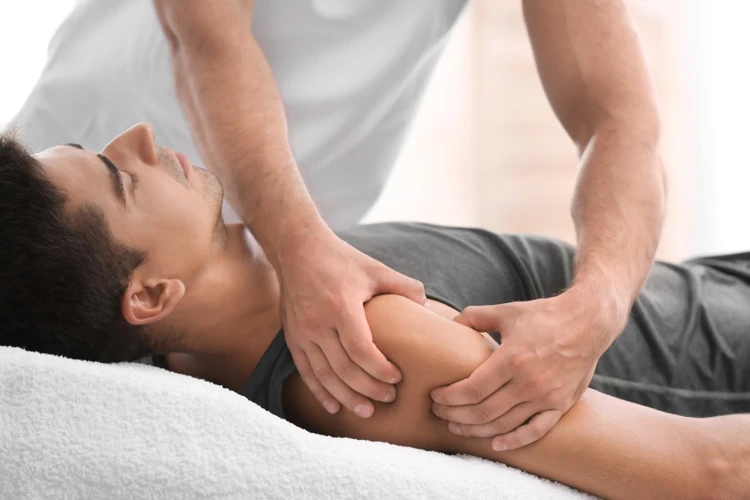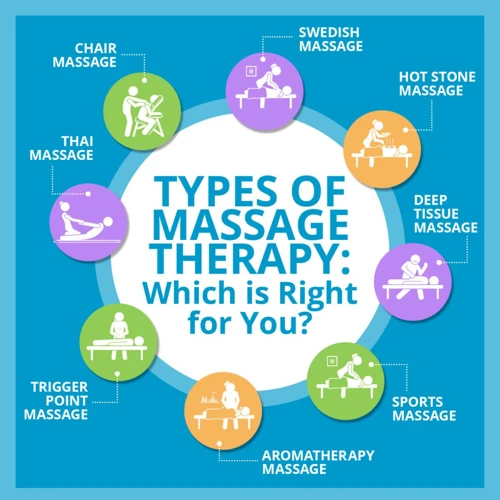Are you suffering from chronic pain or stiffness? If so, you may want to consider massage therapy as a potential treatment option. The question is, “what can massage therapy treat?” Massage therapy is a powerful, natural therapy that can help to alleviate many conditions, including those related to pain and stiffness. In this article, we’ll explore some of the conditions that massage therapy can treat and provide some tips on how to get the most out of your massage sessions. Read on to discover how massage therapy can help you relieve your pain now.
Contents
Benefits of Massage Therapy

- Reduces Stress – Massage therapy helps to reduce stress by calming the nervous system, releasing endorphins and reducing cortisol levels.
- Increases Circulation – Massage therapy helps to increase the circulation of blood and lymph, leading to an improved immune system.
- Pain Relief – Massage therapy can help to reduce pain and inflammation caused by injury, arthritis, and other chronic conditions.
- Improves Posture – Regular massage therapy sessions can help to improve posture by increasing flexibility in the muscles and joints.
- Promotes Relaxation – Massage therapy helps to relax the body and mind, leaving you feeling relaxed and refreshed.
Massage therapy is an effective treatment for a variety of conditions, including headache, chronic pain, and stress. It can also help to reduce muscle tension and improve posture. Massage therapy can be used to treat a wide range of ailments, from headaches and muscle pain to anxiety and depression. So if you are suffering from pain or stress, consider seeking out the help of a massage therapist to relieve your pain and improve your overall wellbeing.
What Does Massage Therapy Treat?

Musculoskeletal Problems
Massage therapy can be used to treat a variety of musculoskeletal issues such as strains, sprains, tendinitis, and whiplash. Massage can help reduce pain, swelling, and tension in the muscles and joints.
Stress and Anxiety
Massage therapy can also be used to help reduce stress and anxiety. The relaxation techniques used in massage can help to calm the mind and body.
Headaches
Massage can be used to help relieve tension headaches and migraine headaches. Massage can help reduce muscle tension in the head, neck, and shoulders, which can help reduce the frequency and intensity of headaches.
Digestive Issues
Massage can help to stimulate the digestive system and help to reduce digestive issues such as constipation, gas, and bloating.
Chronic Pain
Massage can help to reduce chronic pain caused by conditions such as arthritis, fibromyalgia, and sciatica. Massage can help to reduce pain, improve mobility, and increase range of motion.
Types of Massage Therapy

Swedish Massage
Swedish massage is one of the most popular massage techniques and is often used to treat chronic pain, stress, and anxiety. It involves the use of gentle rhythmic strokes, kneading, and pressure to the muscles and joints.
Deep Tissue Massage
Deep tissue massage is used to release chronic tension in the muscles and connective tissue. It is also used to treat muscle spasms, improve posture, and reduce pain. This type of massage is usually more intense than Swedish massage.
Sports Massage
Sports massage is designed to help athletes prepare for competition, reduce fatigue, and improve performance. It can also be used to help prevent injury and improve recovery time.
Trigger Point Massage
Trigger point massage is a type of massage that focuses on specific areas of the body that are prone to pain. It involves applying pressure to the trigger points, which can help to release tension and improve circulation.
Reflexology
Reflexology is a form of massage that uses pressure points on the hands and feet to help relieve stress and tension throughout the body. It can be used to treat a variety of conditions, including back pain, headaches, and insomnia.
Preparing for Your Massage Therapy Session

- Shower: In order for your massage therapist to give you the best possible massage, it is important to shower before your session. This will allow the massage therapist to work with your muscles more effectively.
- Bring Loose Clothing: You should bring loose, comfortable clothing to your massage therapy session. This will make it easier for the massage therapist to access the areas of your body that are being worked on.
- Communicate: It is important to let your massage therapist know if there is any particular area that you would like them to focus on. This will help ensure that your massage therapist is able to provide the best possible experience.
- Hydrate: It is important to drink plenty of water before and after your massage therapy session. This will help to flush out any toxins that may have been released during the massage.
- Relax: Massage therapy can be a very relaxing experience. It is important to take the time to relax and let your body and mind be free during the session.
Risks and Potential Complications of Massage Therapy
Massage therapy is a safe and natural way to treat a variety of conditions and can be used to reduce pain, improve circulation, and reduce stress. However, there are some risks and potential complications associated with massage therapy that should be considered before undergoing massage therapy.
Infection: This is a rare risk associated with massage therapy, but it is possible for bacteria to be spread from one person to another, especially if the massage therapist is not using proper hygiene practices. It is important to make sure that the massage therapist is trained and certified and is using proper sterilization techniques.
Muscle Injury: Massage can cause muscle soreness or bruising, especially if too much pressure is applied. The massage therapist should be careful to use the right amount of pressure and should be aware of any areas that are too tender or sensitive.
Allergic Reactions: Some people may have an allergic reaction to massage oils or lotions. If this is the case, the massage therapist should be informed in advance.
Blood Clots or Bruising: Massage can cause blood clots or bruising in certain areas of the body. It is important to inform the massage therapist of any areas that may be at risk for these complications.
Nerve Damage: Massage therapy can lead to nerve damage if too much pressure is applied to sensitive areas. The massage therapist should be aware of any areas that are more sensitive than others and should use caution when applying pressure.
Fainting: Massage therapy can cause a person to faint due to the relaxation of the muscles. It is important to make sure that the massage therapist is aware of any medical conditions that may make a person more prone to fainting.
Exacerbation of Medical Conditions: Massage therapy can aggravate existing medical conditions, including arthritis and fibromyalgia. If a person has a medical condition, it is important to inform the massage therapist to prevent any potential complications.
Pregnancy: Massage therapy can be beneficial for pregnant women, but it is important to consult with a doctor before undergoing massage therapy.
Deep Tissue Massage: Deep tissue massage should be avoided if a person has certain medical conditions such as cancer, heart disease, or a weakened immune system.
Post-Massage Soreness: It is normal to experience some soreness after a massage, but if the soreness persists for more than a few days, it is important to contact a doctor.
Blood Pressure: Massage can lower blood pressure, so it is important to make sure that the massage therapist is aware of any existing medical conditions that might be affected by a decrease in blood pressure.
Intoxication: Massage can lead to a sense of intoxication, so it is important to make sure that the massage therapist is aware if a person has consumed any drugs or alcohol prior to the massage.
Skin Irritation: Massage can cause skin irritation if the massage therapist is not careful. It is important to make sure that the massage therapist is using proper hygiene practices and is using the right oils and lotions for the person’s skin type.
Excessive Pressure: Massage should not be painful, and the massage therapist should be aware of any areas of the body that are too sensitive.
Spasms: Massage can cause spasms if too much pressure is applied. The massage therapist should be aware of any areas of the body that are prone to spasms.
Frequently Asked Questions
What type of massage therapy is best for treating pain?
Deep tissue massage is generally considered to be the best type of massage therapy for treating pain. This type of massage targets the deeper layers of muscle and connective tissue, stimulating circulation and releasing muscle tension. Other types of massage, such as Swedish massage and trigger point therapy, can also provide relief from pain and discomfort. It is important to consult with a qualified massage therapist who can assess your individual needs and recommend a treatment plan.
Does Massage Therapy Have Any Side Effects?
Massage therapy is generally considered safe and has few, if any, side effects. As with any form of therapy, there may be some minor side effects, such as soreness, stiffness, or bruising. However, these effects are usually temporary and should subside within a few days. If any of these side effects persist or worsen, it is important to seek medical attention.
How often should a person receive massage therapy for pain relief?
The frequency of massage therapy sessions depends on the severity of the pain.
- For milder pain, a bi-weekly massage session may be enough to alleviate the pain.
- For moderate pain, a weekly massage session can help reduce the intensity of the pain.
- For severe pain, a massage session at least twice a week can help to reduce the pain and discomfort.
- For chronic pain, regular and frequent massage therapy sessions are recommended.
It is also important to discuss with your massage therapist the best frequency for massage therapy sessions. The frequency of massage therapy sessions may also depend on the type of massage therapy being used.
Is Massage Therapy a Safe and Effective Treatment for Chronic Pain?
Yes, massage therapy is a safe and effective treatment for chronic pain. Research has shown that massage therapy can reduce pain, improve range of motion, reduce inflammation, and improve overall quality of life. It can also help with managing stress and depression associated with chronic pain. Massage therapy is also a great way to relax and reduce stress levels which can help reduce symptoms.
What Types of Conditions Can Massage Therapy Help Alleviate?
Massage therapy can be beneficial for many conditions including muscle pain, tension, headaches, arthritis, nerve pain, sciatica, whiplash, frozen shoulder, sports injuries, depression, anxiety and other mental health conditions. It can also help reduce stress and improve sleep quality. Additionally, massage therapy can help improve circulation, reduce swelling, improve posture, and increase flexibility.
Conclusion
Massage therapy can be a great way to target and treat a variety of conditions. From chronic pain to tension headaches to anxiety, it can be a natural and effective way to get relief from pain and stress. Massage therapy can also help improve circulation, reduce inflammation, and improve overall mobility. If you’re dealing with any of these conditions, it may be time to consider massage therapy as a way to get relief.

